The Ellinger Brothers’ Óbuda
The musical instants of Óbuda, “the Pompeii at Budapest’s borders,” in the light of the modern industrial culture as well as the traditional occasions of music making in the local denominations, including an outlook at the careers of Gusztáv and József Ellinger, the musician brothers who originated from here
It came as a surprise to many that Óbuda, a peripheral area in the 19th century, was placed in 1873 under the same administrative jurisdiction as Pest and Buda. The characteristic features of its rural image, hiding memories of olden centuries, resulted from the local communities. The Óbuda parish feast, visited by the inhabitants of Pest-Buda, or the Emperor’s greeting in the synagogue were just a few highlights from the local denominations’ music life.
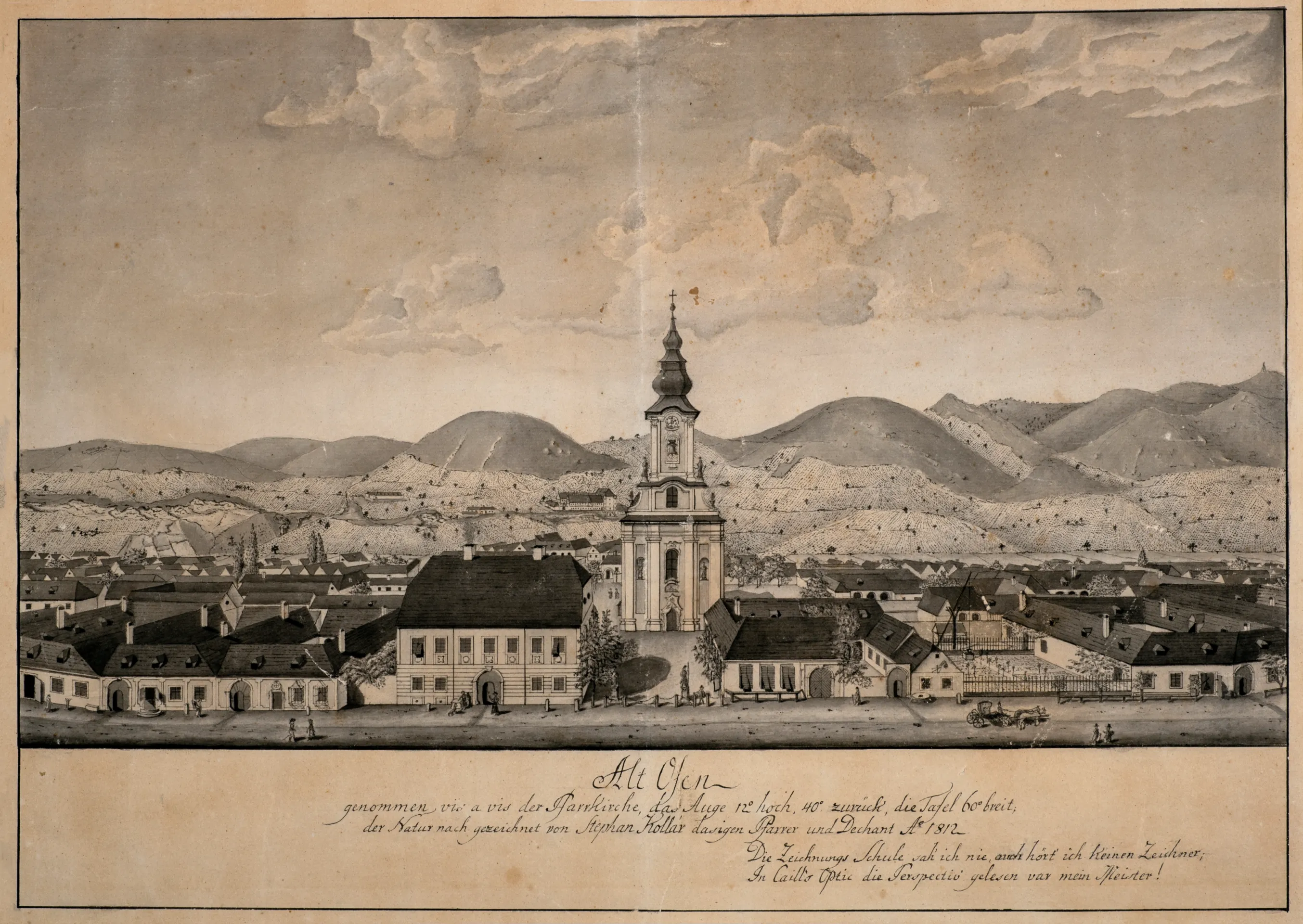
BHM Kiscell Museum, Municipal Gallery, KM.73.27
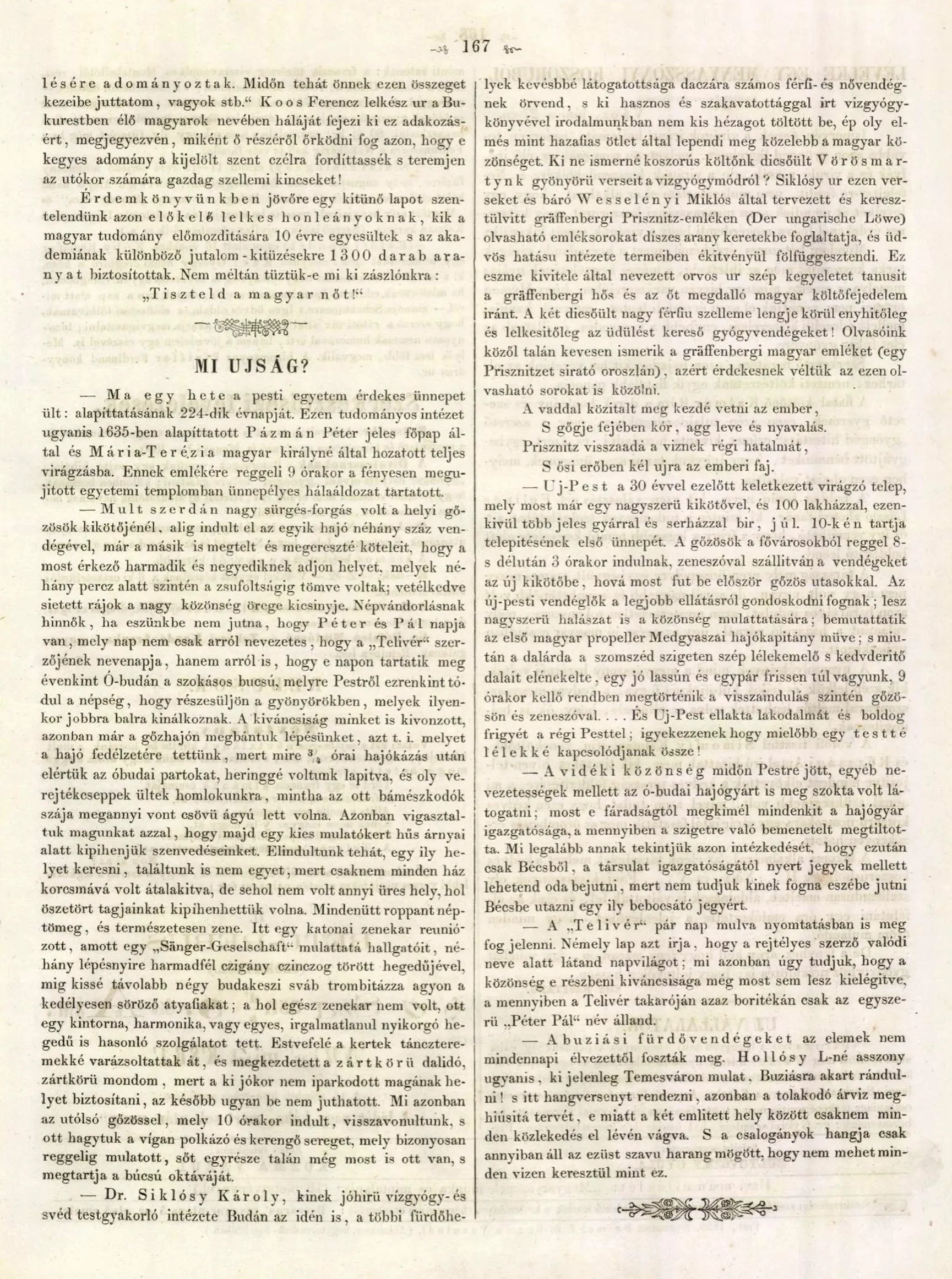
Nefelejts, 3 July 1859, 167.
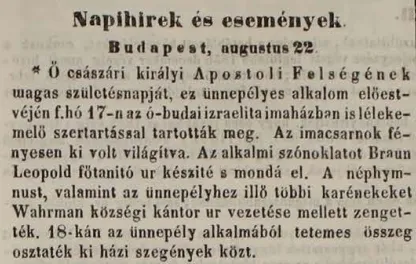
Budapesti Hirlap, 22 August 1856, 3.
The shipyard of the First Danube Steamboat-Shipping-Company (founded in 1835 on the initiative of Count István Széchenyi) turned the locality into one of the capital’s industrial spectacles.
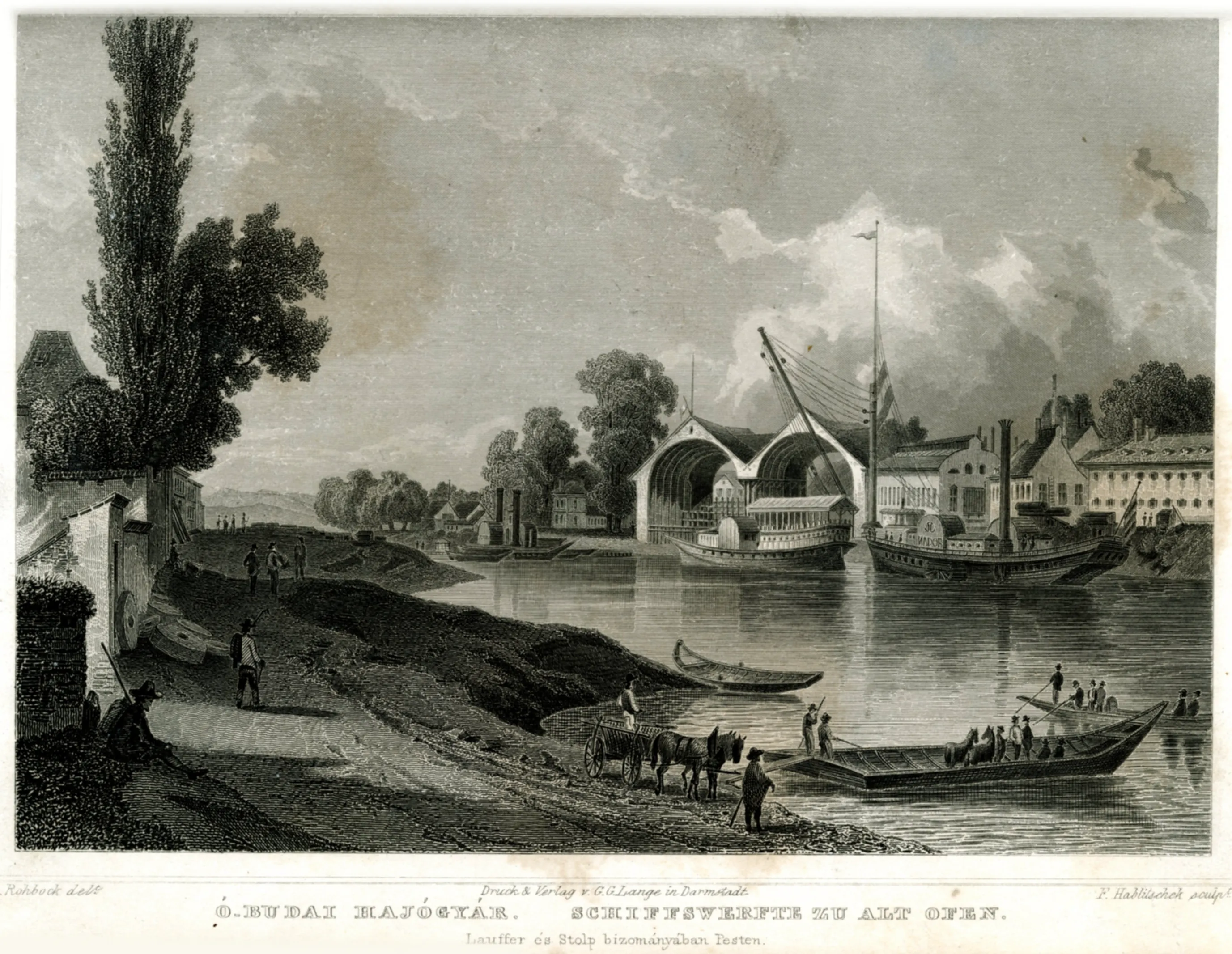
Metropolitan Ervin Szabó Library, Budapest Collection, AN033195
Interestingly enough, the Calvinist workers of the First Danube Steamboat-Shipping-Company became members of the Óbuda Choral Society. According to contemporary accounts, a choir, initially consisting of eight members, was formed for a service commemorating the victims of a tragic accident in 1857; later – at the initiative of the Reformed presbyter and shipyard supervisor János Cserepes –, further members joined the ensemble, first, the workers who coming from Komárom who were employed in Óbuda. Among the teachers of the choir, we find a medical doctor and a metropolitan musician – József Égei and Wenzel Pekarek, respectively; the latter was a music teacher from the capital’s Tabán area. The membership fees also paid for sheet music and literary magazines. With a repertoire mainly based on religious songs, which was expanded over the time to secular and folk songs, they performed at church and charity events, and some of their singers were singled out by name for their beautiful voices.
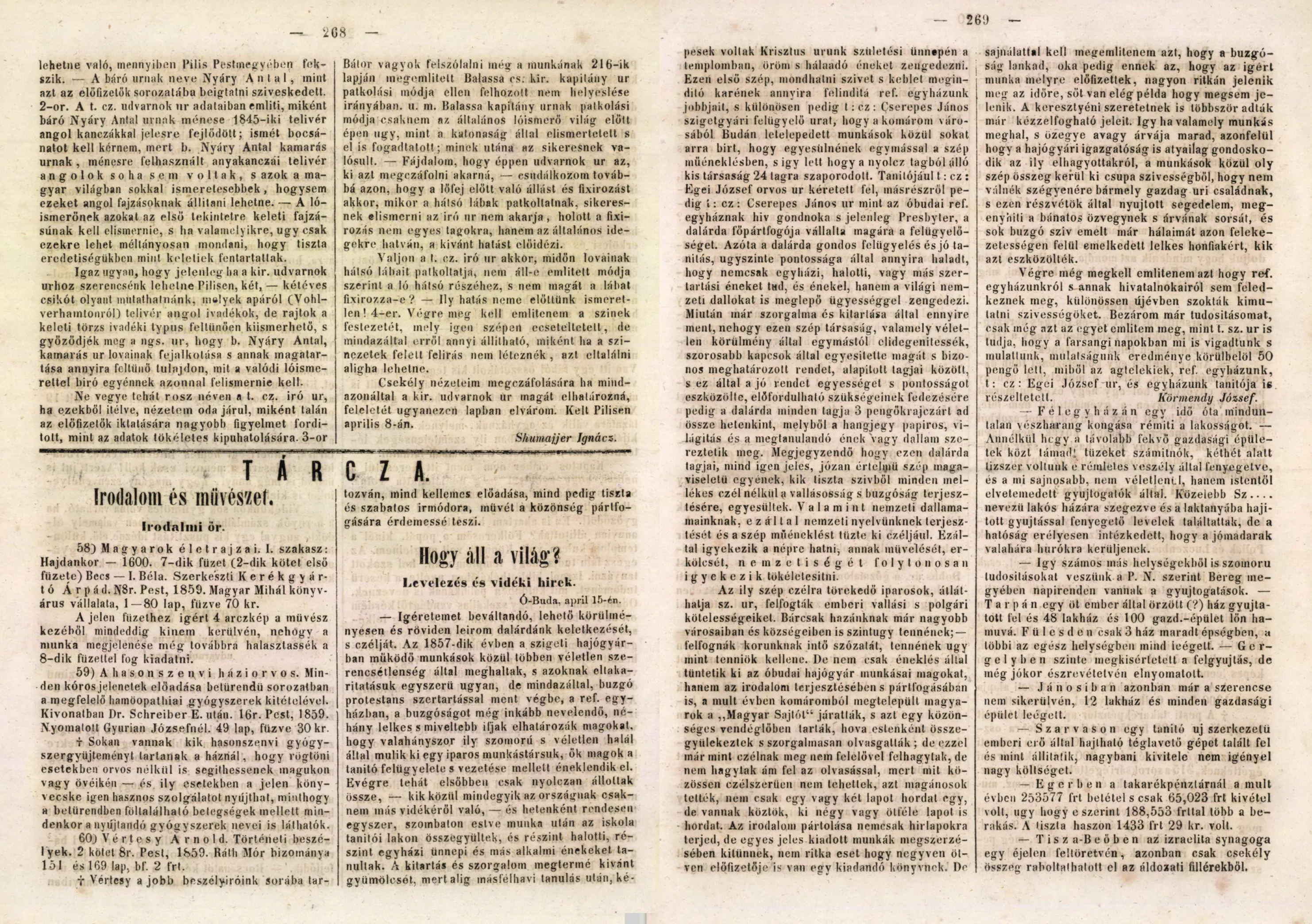
Kalauz, 2 April 1859, 268–269.
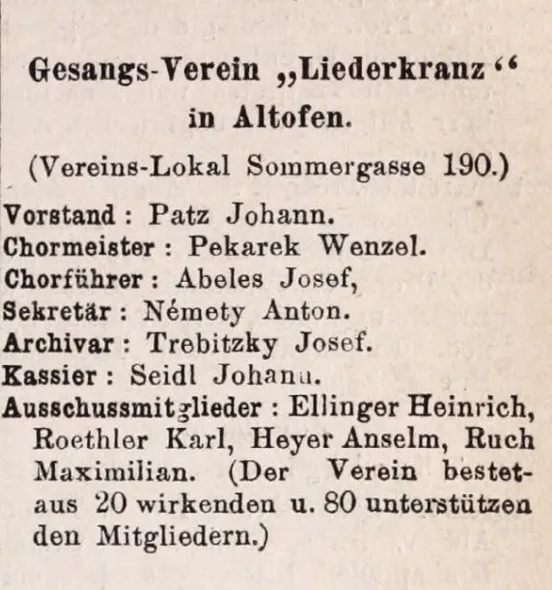
Adress-Kalender von Pest, Ofen und Alt-Ofen 1867 (Pest, 1866), 373.
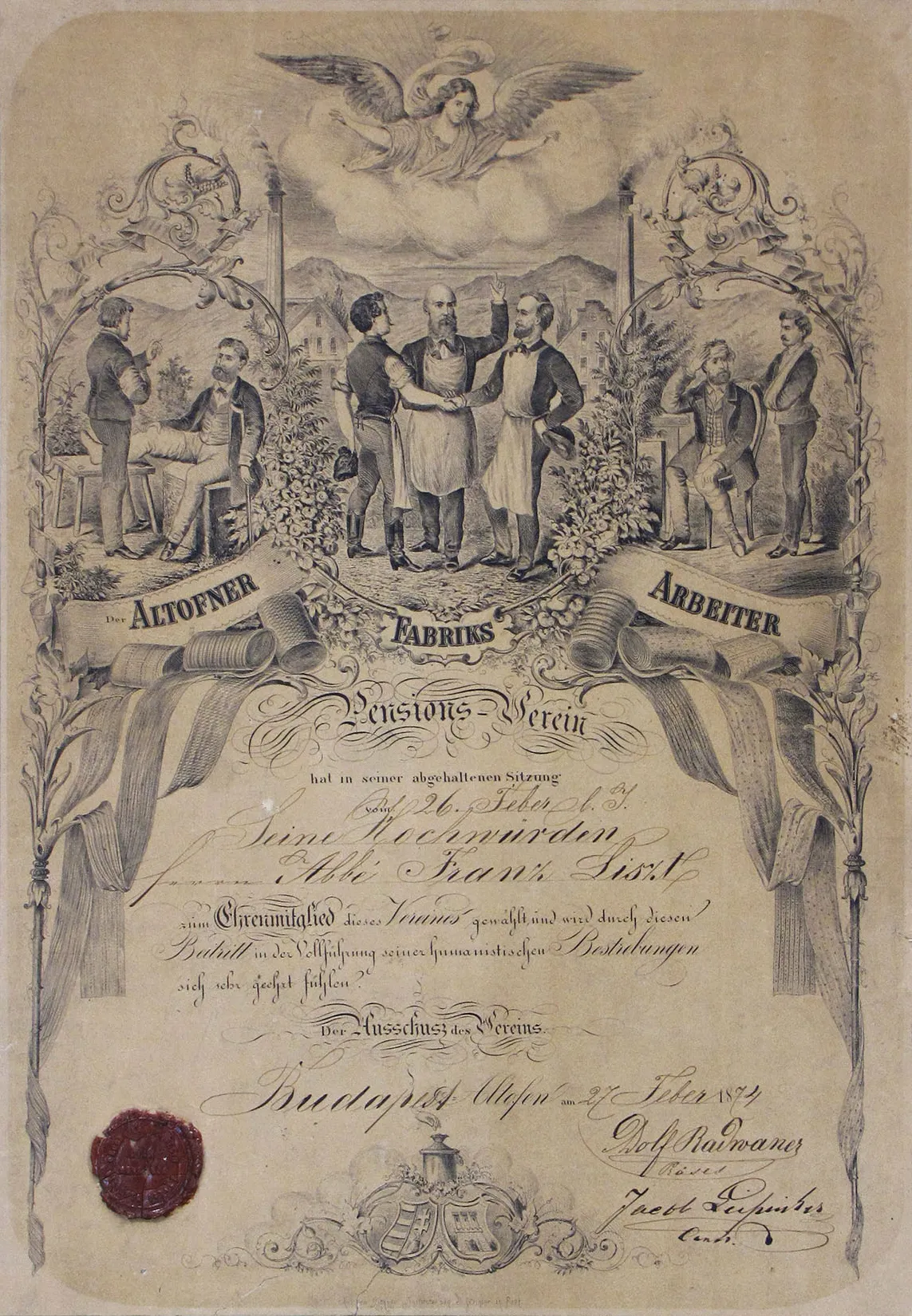
Liszt Academy of Music, Liszt Ferenc Memorial Museum and Research Centre, AD 013
The steamboats produced here – e.g. the “Széchenyi,” at the inauguration of which Erkel’s National Anthem was sung for the first time in public – made it easier to reach different parts of the capital. The period accounts not only describe the atmosphere of the events, but – not exactly in glowing terms – also the conditions of the journey.
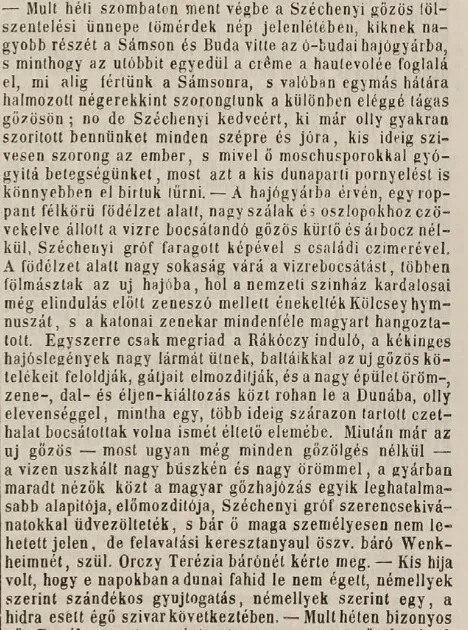
Hirnök, 23 August 1844, 389.
Built on medicinal springs, known since the antiquity, the Kaiserbad [Imperial Spa] of Buda, with its columned courtyard designed by József Hild, soon became a popular venue for the audience visiting the balls and concerts given by bath orchestras. For these musical events organized by József Szekrényessy, there was a regular steamboat service, arriving from Pest and Óbuda. The owner took special care to accommodate the orchestra, to arrange prize games for the audience, and even to have the reopening of the Kaiserbad in 1863 coincide with the parish feast in Óbuda, a double celebration, where three orchestras entertained the audience.
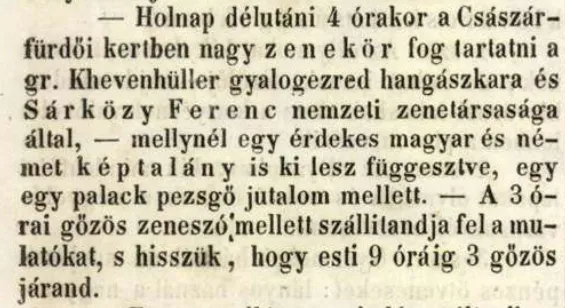
Hölgyfutár, 28 May 1853, 424.
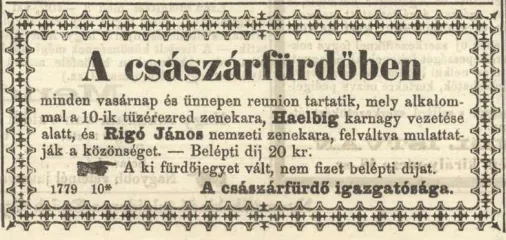
Pesti Napló, 14 June 1863, 3.
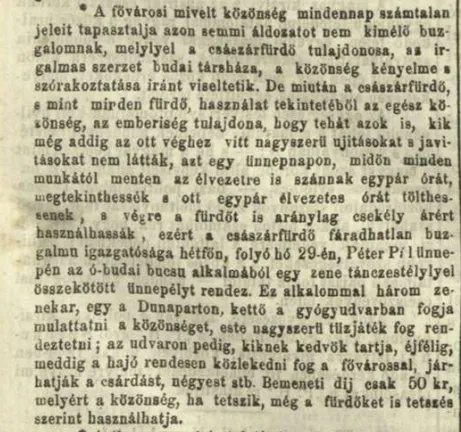
Sürgöny, 28 June 1863, 2.
In addition to its illustrious guests, the Kaiserbad was also famous for its decorative courtyard, which also served as a venue for musical events. Moreover, in addition to Rudolf von Alt’s depictions of the sights of Pest-Buda, the title page of Wilhelm Deutsch’s Waltz also captures the spa’s arcaded courtyard, once housing the musical gatherings.
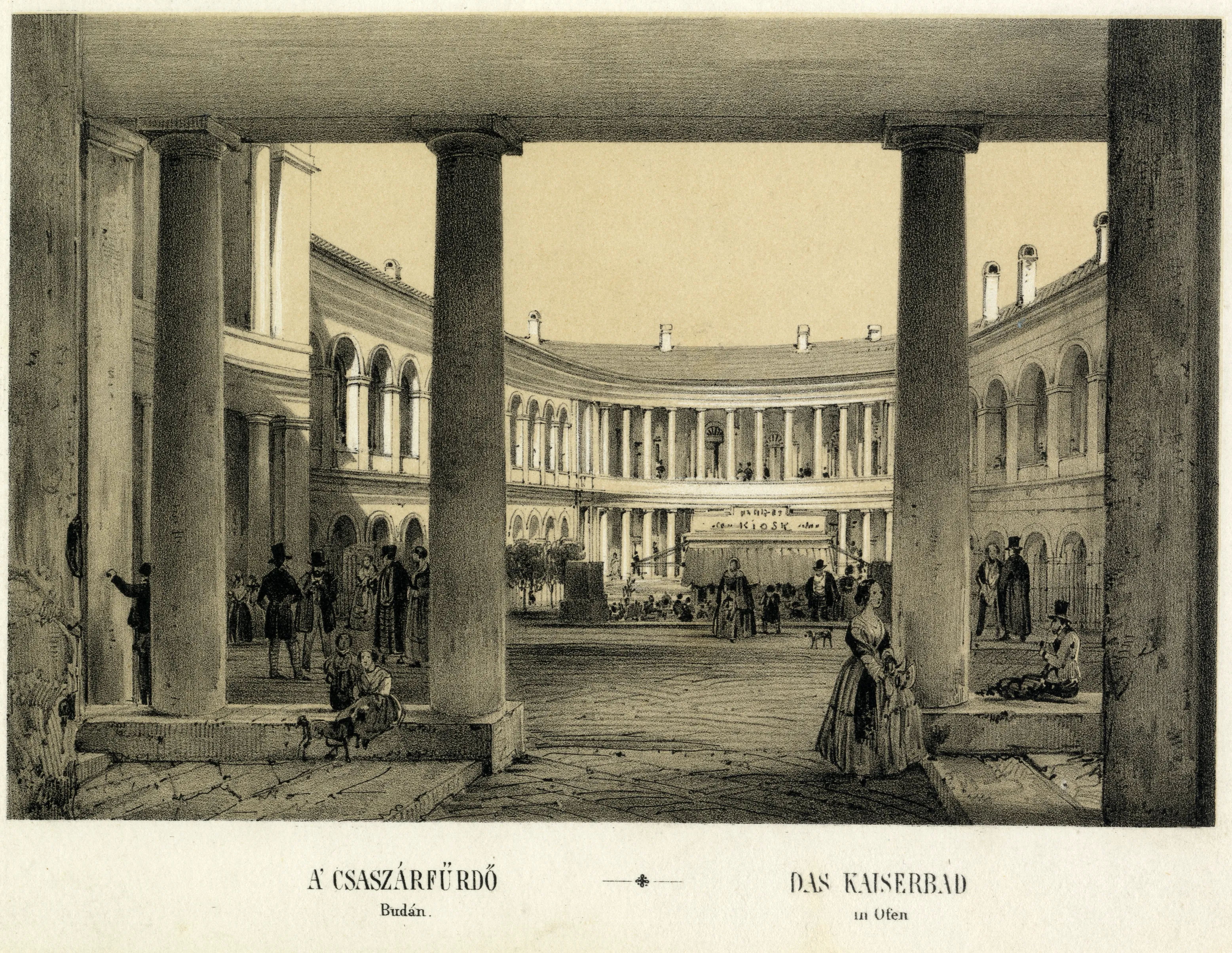
Hungarian National Museum Historical Gallery, Graphics Collection, T. 3439
![Wilhelm Deutsch: Kaiserbad-Tänze Walzer für Pianoforte (Pest, Rózsavölgyi & Comp. [1857]).](/images/6-deutsch-kaiserbad.webp)
Research Library of the Liszt Academy of Music, M 50.483
Nándor Magyary established his National Coffee Shop in Óbuda, being probably motivated by the hope of filling a local niche market. The opening ceremony also featured a cimbalom performance.
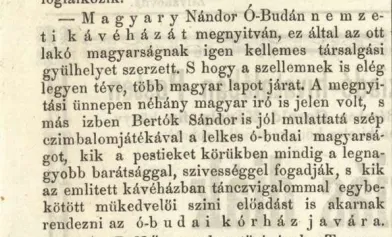
Pesti Napló, 24 December 1862, 3.
According to the recollections of writer Mór Jókai, the Buda riverbank was directly connected to the Margaret Island. Boats could be called to stop by ringing the bell of the respective house in Buda:
![Mór Jókai: Margaret Island, in The Austro-Hungarian Monarchy in Writings and Pictures. Vol. 9. Hungary III – Budapest and Fiume [Rijeka]. Budapest / Life in Budapest (Budapest, 1893), 141..](/images/6-jokai-margitsziget.webp)
The Margaret Island – originally a summer residence of the Palatine – was opened for the public primarily as a tourist destination for a few years, but the number of visitors rose with its baths built from the 1860s. Some of the musical events organized here had special character, e.g. in 1863 the rowing competition on the occasion of Richard Wagner’s visit to Pest, or the May Day festival of the Union of the Choral Societies, where a musical steamer was involved.
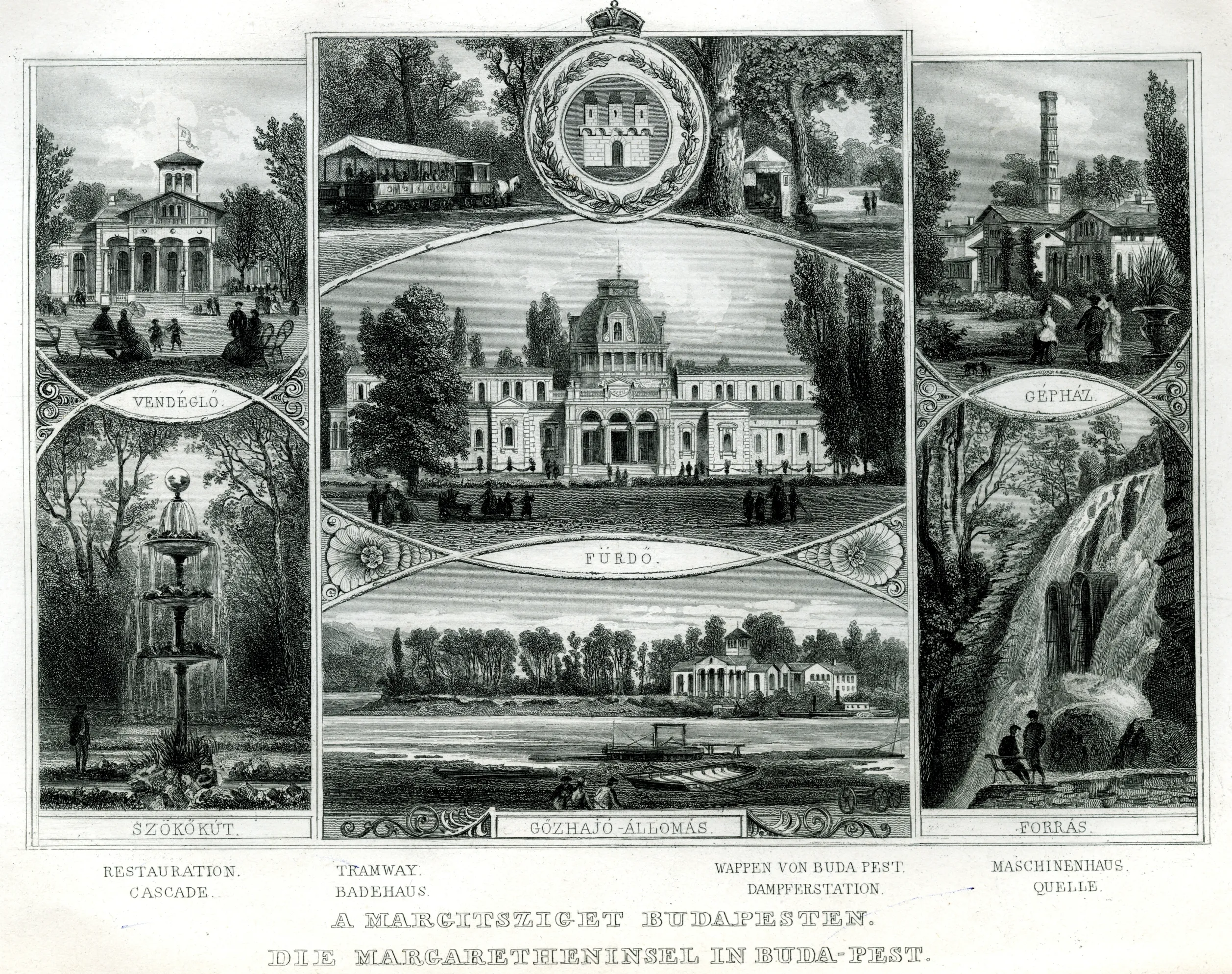
Metropolitan Ervin Szabó Library, Budapest Collection, AN007500
Based on later recollections, we can assume that the community atmosphere created by the many nationalities and religions provided the first impressions for the musical socialization of the Ellinger brothers, born in of Óbuda. However, while the memoirs of József Ellinger, the National Theatre’s tenor singer also supported by Erkel, concentrate on his successes abroad making only a terse reference to his birthplace, the obituary of his brother, Gusztáv, is much more talkative. The necrology of the acclaimed violin teacher, Gusztáv Ellinger, evokes in a characteristic manner the world of the famous multi-ethnic musical dynasties and Gypsy bandleaders, as the teachers who gave the first musical impulses.
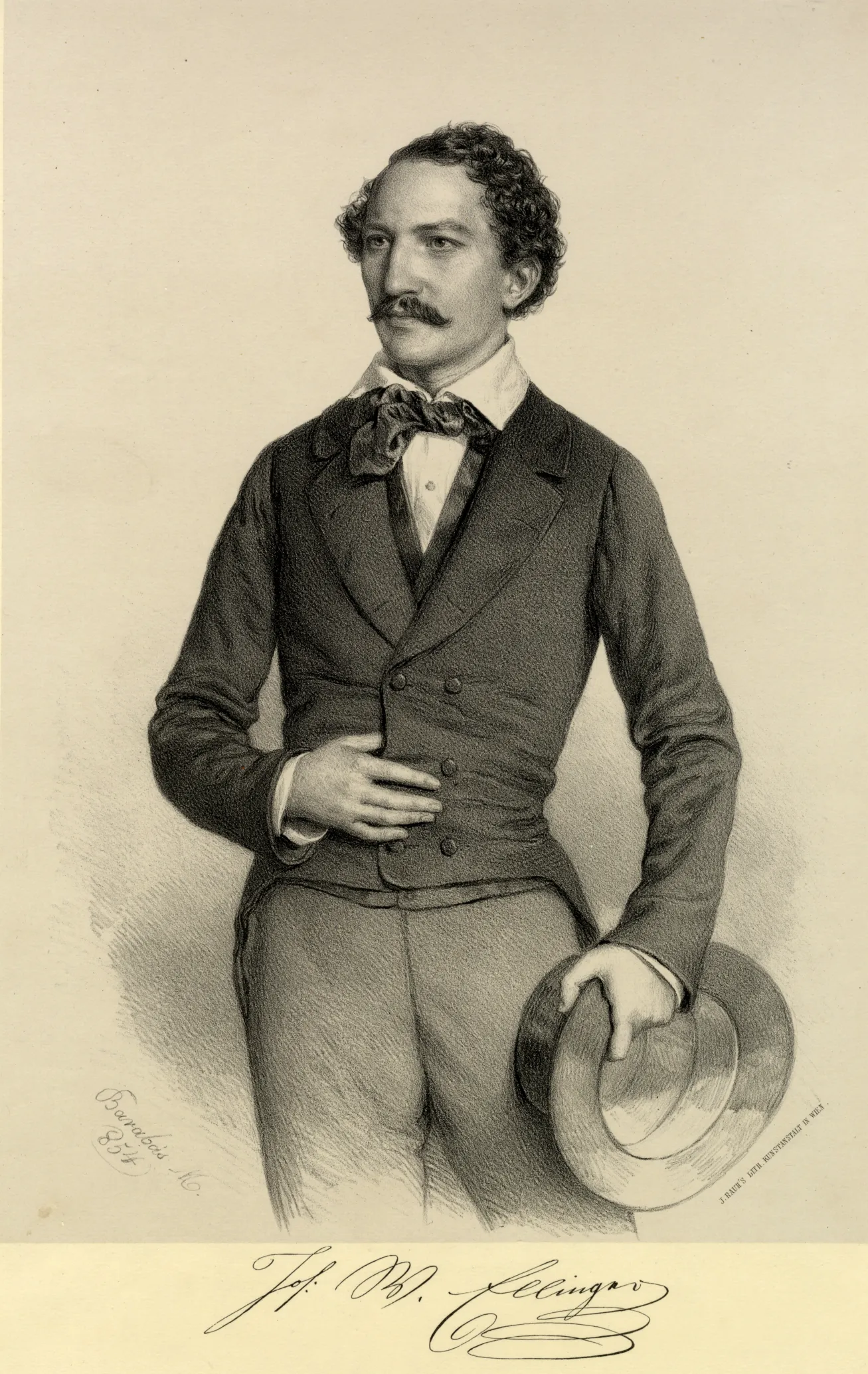
Hungarian National Museum Historical Gallery, Graphics Collection, 1238
Preparing his return from Holland to Pest during the mid-1860s, József Ellinger wrote letters to Ferenc Erkel: in the first one Ellinger ask opera parts to be sent to Rotterdam. In his other letter, he alludes to a meerschaum pipe as a gift to congratulate Erkel on his conducting in Fidelio.
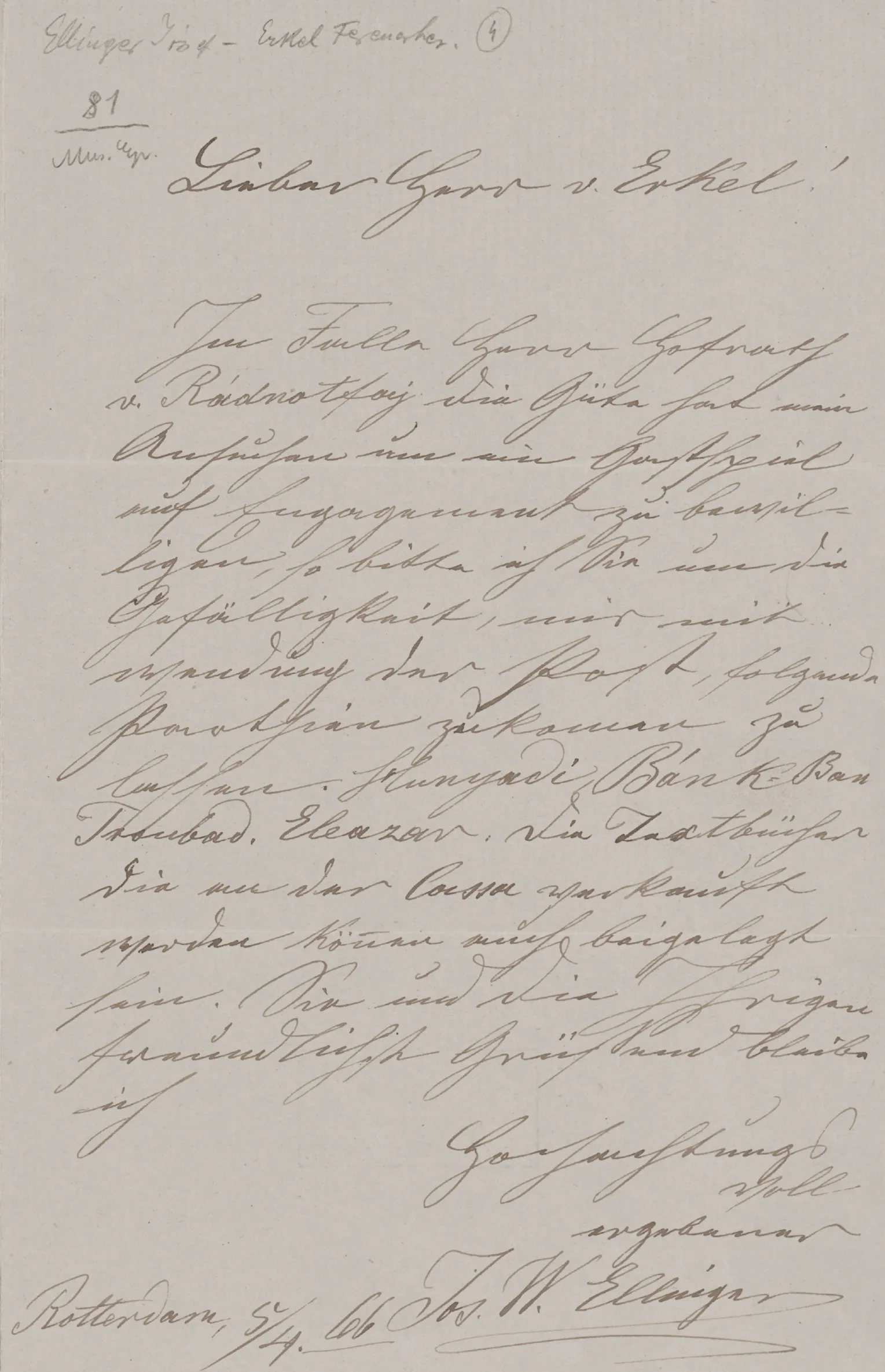
Széchényi Library, Manuscript Collection, FOND XII/256, nr. 4.
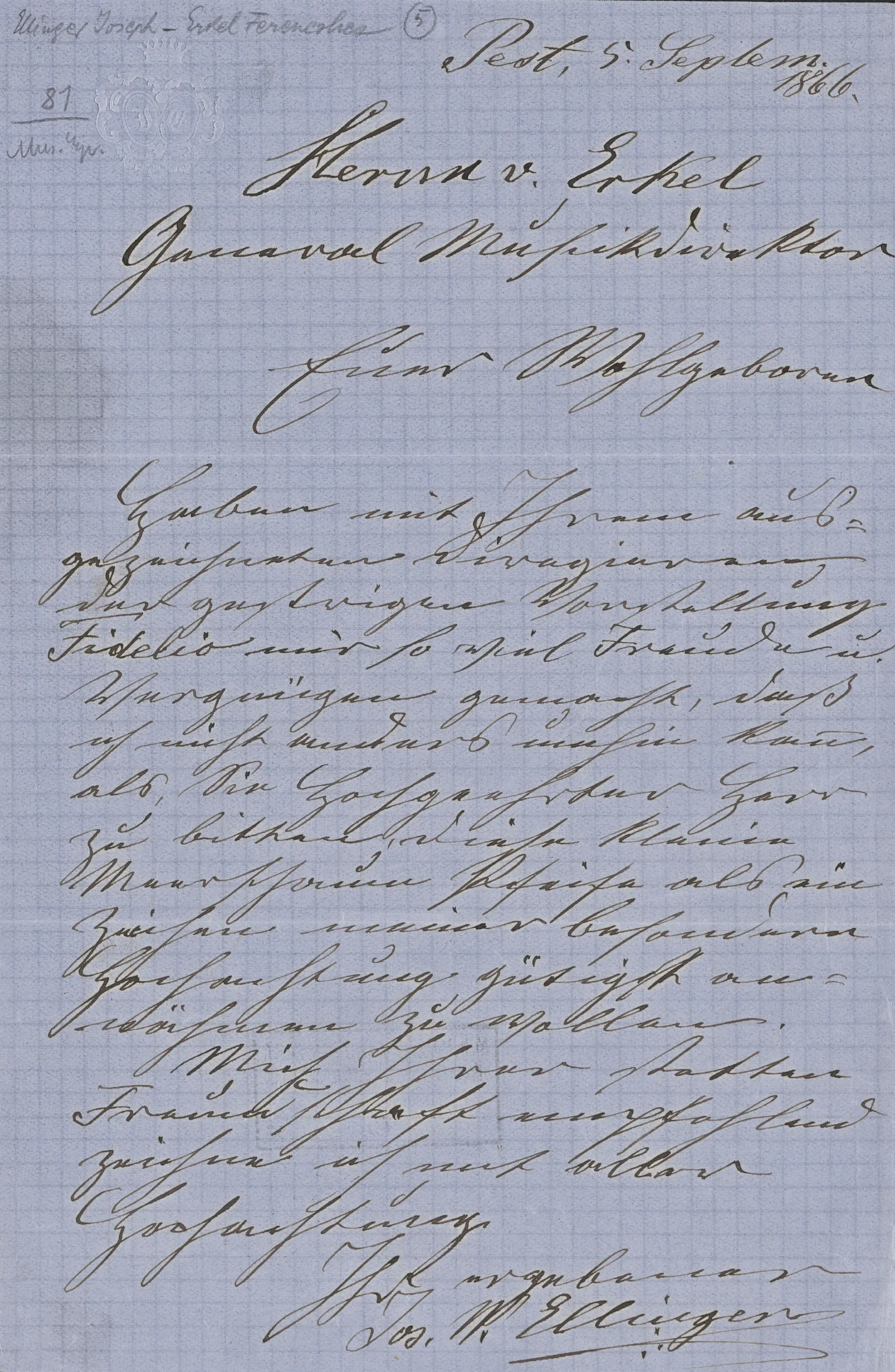
National Széchényi Library, Manuscript Collection, FOND XII/256, nr. 5.
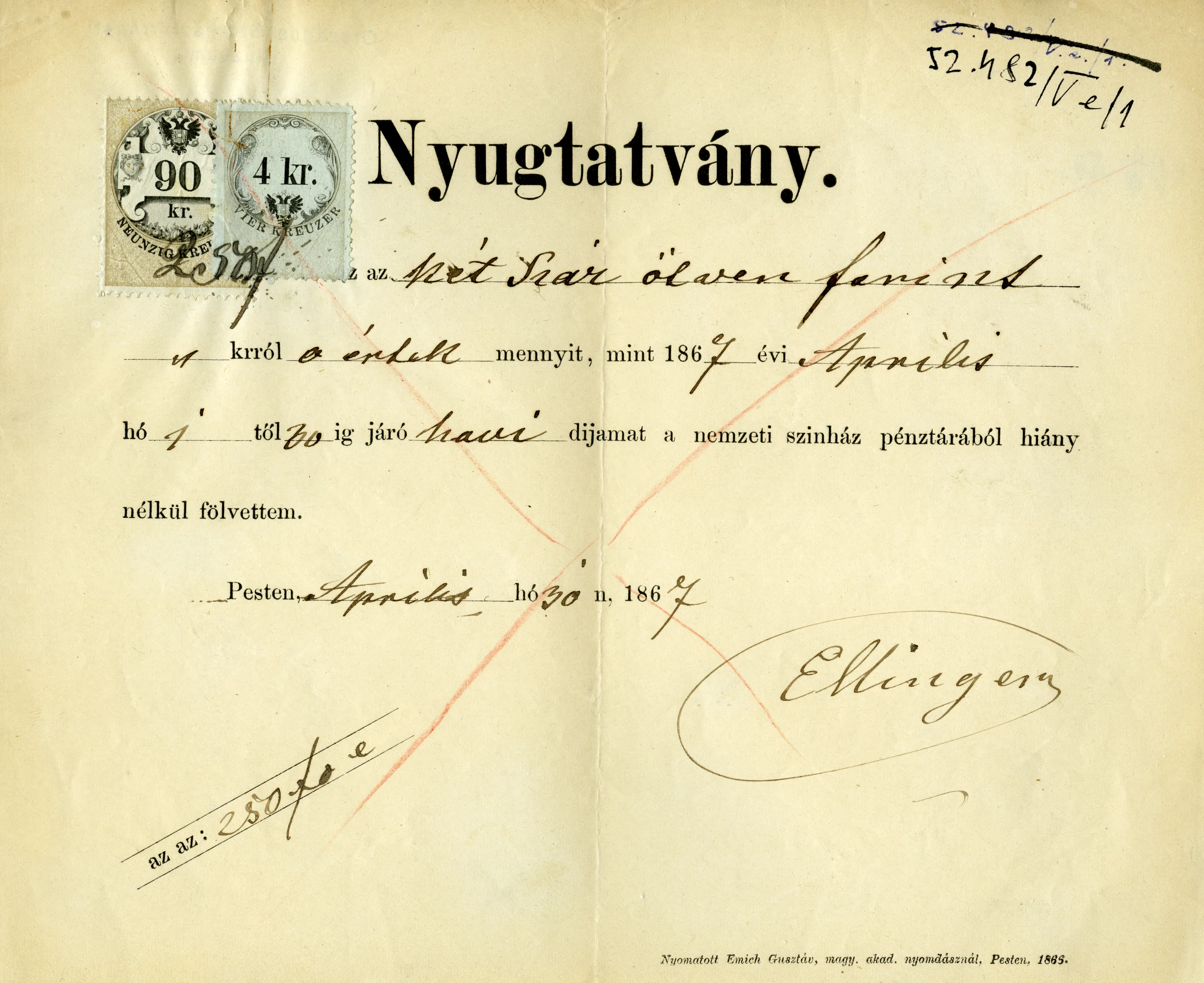
Hungarian Theatre Museum and Institute, 52.482.1
![[Z. M.]: Ellinger Gusztáv (1810–1898)](/images/6-pestinaplo-ellinger.webp)
Pesti Napló, 6 March 1898, 5.
Curated by Emese Tóth
